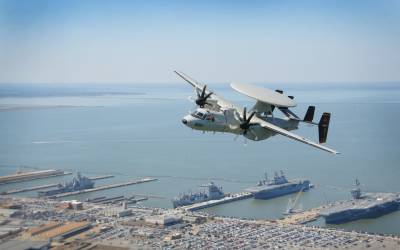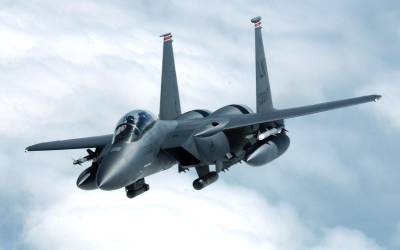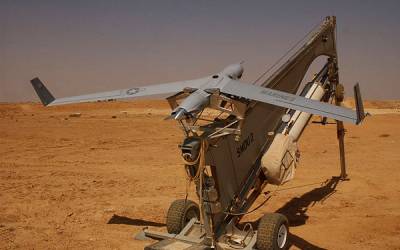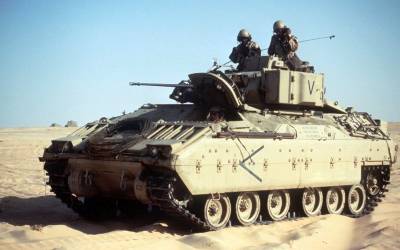April 26, 2024
E-2D Hawkeye: The Navy's New AWACS
(click to view full) Northrop Grumman’s E-2C Hawkeye is a carrier-capable “mini-AWACS” aircraft, designed to give long-range warning of incoming aerial threats. Secondary roles include strike command and control, land and maritime surveillance, search and rescue, communications relay, and even civil air traffic control during emergencies. E-2C Hawkeyes began replacing previous Hawkeye versions in 1973. […]
Full Article Status: paid
April 15, 2024
Aging Aircraft: USAF F-15 Fleet Sees Renewed Interest
F-15C over DC (click to view full) “Array of Aging American Aircraft Attracting Attention” discusses the issues that accompany an air force whose fighters have an average age of over 23.5 years – vs. an average of 8.5 years in 1967. One of the most obvious consequences is the potential for fleet groundings due to […]
Full Article Status: sample
April 12, 2024
From Dolphins to Destroyers: The ScanEagle UAV
ScanEagle launch (click to view full) ScanEagle’s base Insight UAV platform was originally developed by Washington state’s Insitu, Inc. to track dolphins and tuna from fishing boats, in order to ensure that the fish you buy in supermarkets is “dolphin-safe”. It turns out that the same characteristics needed by fishing boats (able to handle salt […]
Full Article Status: sample
March 21, 2024
Pilum High: The Javelin Anti-Armor Missile
Javelin, firing (click to view full) The FGM-148 Javelin missile system aimed to solve 2 key problems experienced by American forces. One was a series of disastrous experiences in Vietnam, trying to use 66mm M72 LAW rockets against old Soviet tanks. A number of replacement options like the Mk 153 SMAW and the AT4/M136 spun […]
Full Article Status: paid
February 29, 2024
AMRAAM: Deploying & Developing America's Medium-Range Air-Air Missile
AIM-120C from F-22A (click for test missile zoom) Raytheon’s AIM-120 Advanced, Medium-Range Air to Air Missile (AMRAAM) has become the world market leader for medium range air-to-air missiles, and is also beginning to make inroads within land-based defense systems. It was designed with the lessons of Vietnam in mind, and of local air combat exercises […]
Full Article Status: paid
February 6, 2024
The US Army's Bradley Remanufacture Program
M3A3 Bradley CFV: Charge! (click to view full) In the 1970s, middle eastern wars demonstrated that tanks without infantry screens were vulnerable to infantry with anti-tank missiles. Unfortunately, armored personnel carriers were easy prey for enemy tanks, and sometimes had trouble just keeping up with friendly tanks like America’s 60+ ton, 50+ mph M1 Abrams. […]
Full Article Status: sample
February 1, 2024
Super Hornet Fighter Family MYP-III: Contracts
Breakthrough… (click to view full) The US Navy flies the F/A-18 E/F Super Hornet fighters, and has begun operating the EA-18G Growler electronic warfare & strike aircraft. Many of these buys have been managed out of common multi-year procurement (MYP) contracts, which aim to reduce overall costs by offering longer-term production commitments, so contractors can […]
Full Article Status: paid
November 6, 2023
E-2D Hawkeye: The Navy's New AWACS
(click to view full) Northrop Grumman’s E-2C Hawkeye is a carrier-capable “mini-AWACS” aircraft, designed to give long-range warning of incoming aerial threats. Secondary roles include strike command and control, land and maritime surveillance, search and rescue, communications relay, and even civil air traffic control during emergencies. E-2C Hawkeyes began replacing previous Hawkeye versions in 1973. […]
Full Article Status: paid
November 7, 2023
Super Hornet Fighter Family MYP-III: Contracts
Breakthrough… (click to view full) The US Navy flies the F/A-18 E/F Super Hornet fighters, and has begun operating the EA-18G Growler electronic warfare & strike aircraft. Many of these buys have been managed out of common multi-year procurement (MYP) contracts, which aim to reduce overall costs by offering longer-term production commitments, so contractors can […]
Full Article Status: paid
November 10, 2023
Airfields Afloat: The USA's New Gerald Ford Class Super-Carriers
USA’s Nimitz Class & UK’s Invincible Class (click to view full) Some nations have aircraft carriers. The USA has super-carriers. The French Charles De Gaulle Class nuclear carriers displace about 43,000t. India’s new Vikramaditya/ Admiral Gorshkov Class will have a similar displacement. The future British CVF Queen Elizabeth Class and related French PA2 Project are […]
Full Article Status: paid
June 27, 2023
Pilum High: The Javelin Anti-Armor Missile
Javelin, firing (click to view full) The FGM-148 Javelin missile system aimed to solve 2 key problems experienced by American forces. One was a series of disastrous experiences in Vietnam, trying to use 66mm M72 LAW rockets against old Soviet tanks. A number of replacement options like the Mk 153 SMAW and the AT4/M136 spun […]
Full Article Status: paid
June 5, 2023
Super Hornet Fighter Family MYP-III: Contracts
Breakthrough… (click to view full) The US Navy flies the F/A-18 E/F Super Hornet fighters, and has begun operating the EA-18G Growler electronic warfare & strike aircraft. Many of these buys have been managed out of common multi-year procurement (MYP) contracts, which aim to reduce overall costs by offering longer-term production commitments, so contractors can […]
Full Article Status: paid
May 5, 2023
E-2D Hawkeye: The Navy's New AWACS
(click to view full) Northrop Grumman’s E-2C Hawkeye is a carrier-capable “mini-AWACS” aircraft, designed to give long-range warning of incoming aerial threats. Secondary roles include strike command and control, land and maritime surveillance, search and rescue, communications relay, and even civil air traffic control during emergencies. E-2C Hawkeyes began replacing previous Hawkeye versions in 1973. […]
Full Article Status: paid
April 20, 2023
Aging Aircraft: USAF F-15 Fleet Sees Renewed Interest
F-15C over DC (click to view full) “Array of Aging American Aircraft Attracting Attention” discusses the issues that accompany an air force whose fighters have an average age of over 23.5 years – vs. an average of 8.5 years in 1967. One of the most obvious consequences is the potential for fleet groundings due to […]
Full Article Status: sample
March 20, 2023
Airfields Afloat: The USA's New Gerald Ford Class Super-Carriers
USA’s Nimitz Class & UK’s Invincible Class (click to view full) Some nations have aircraft carriers. The USA has super-carriers. The French Charles De Gaulle Class nuclear carriers displace about 43,000t. India’s new Vikramaditya/ Admiral Gorshkov Class will have a similar displacement. The future British CVF Queen Elizabeth Class and related French PA2 Project are […]
Full Article Status: paid
March 2, 2023
Australia's Troubled E-7A "Wedgetail" AWACS Program
E-7A Wedgetail over New South Wales (click to view full) The island continent of Australia faces a number of unique security challenges that stem from its geography. The continent may be separated from its neighbors by large expanses of ocean, but it also resides within a potential arc of instability, and has a number of […]
Full Article Status: paid
December 30, 2022
From Dolphins to Destroyers: The ScanEagle UAV
ScanEagle launch (click to view full) ScanEagle’s base Insight UAV platform was originally developed by Washington state’s Insitu, Inc. to track dolphins and tuna from fishing boats, in order to ensure that the fish you buy in supermarkets is “dolphin-safe”. It turns out that the same characteristics needed by fishing boats (able to handle salt […]
Full Article Status: sample
December 12, 2022
UH-72 Lakota Light Helicopter Lands Airbus in US Defense Market
UH-72As: MEDEVAC (click to view full) DID’s FOCUS articles offer in-depth, updated looks at significant military programs of record. This is DID’s FOCUS Article regarding the US Army’s Light Utility Helicopter program, covering the program and its objectives, the winning bid team and industrial arrangements, and contracts. The US Army’s LUH program will finish as […]
Full Article Status: paid
October 7, 2022
Airfields Afloat: The USA's New Gerald Ford Class Super-Carriers
USA’s Nimitz Class & UK’s Invincible Class (click to view full) Some nations have aircraft carriers. The USA has super-carriers. The French Charles De Gaulle Class nuclear carriers displace about 43,000t. India’s new Vikramaditya/ Admiral Gorshkov Class will have a similar displacement. The future British CVF Queen Elizabeth Class and related French PA2 Project are […]
Full Article Status: paid
August 25, 2022
WLSP: Britain's $1.2B E-3D AWACS Support Contract
British E-3 Sentry (click to view full) Britain’s E-3D Sentry Airborne Warning and Control System (AWACS) is based on Boeing’s 707 family, and its ability to see and direct air operations within hundreds of miles provides vital strategic support. Since its introduction in 1992, the RAF’s fleet of 7 E-3s has been used in every […]
Full Article Status: free











